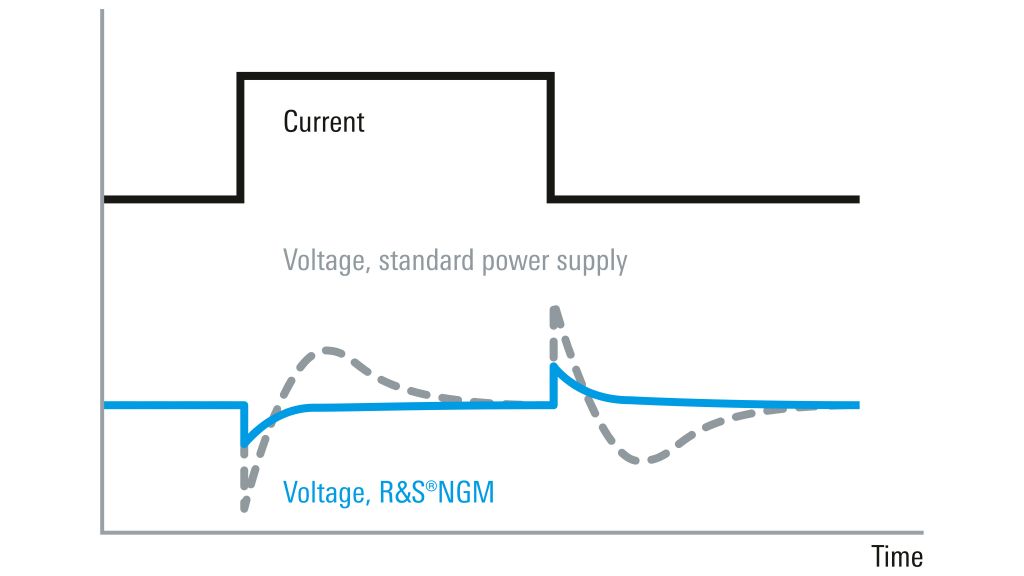R&S®Essentials | DC Power supplies fundamentals
Arbitrary and ramp function
Author: Anja Fenske, Product Manager R&S Essentials Power supplies
An arbitrary file stores voltage, current and dwell time for a certain number of points. In addition, the number of repetitions for a defined sequence of points can be specified. This allows, for example, to emulate real-world scenarios using arbitrary functions as voltage or current inputs for testing the resilience of a DUT against variations in supply voltage and current delivery.
Unlike the arbitrary function, the curve of the ramp function has a fixed shape. The ramp functionality provides a linear “fade-in” curve for the unloaded voltage versus time after switching on the corresponding output channel of the power supply. It can be used to protect circuits from damage by inrush current. The only configurable parameter for the ramp function is the ramp time from switch-on until the full unloaded voltage is reached.
Arbitrary and ramp functions with Rohde & Schwarz
DC power supplies from Rohde & Schwarz provide arbitrary functions like EasyArb or QuickArb. The parameters for the individual channels are organized according to a defined scheme, providing a certain degree of compatibility between arbitrary files.














